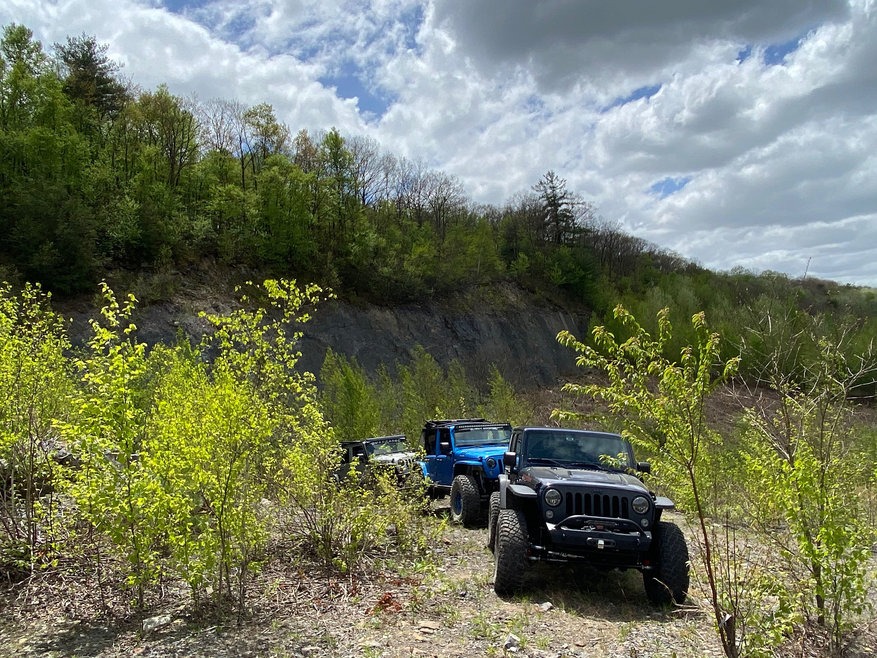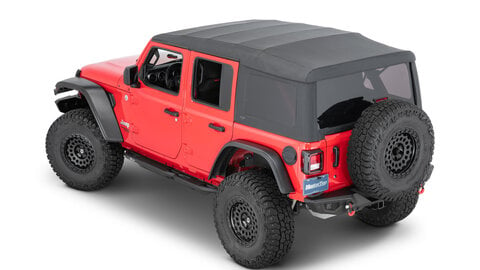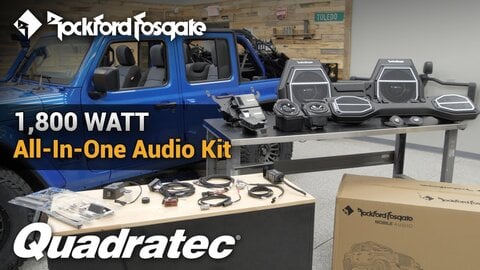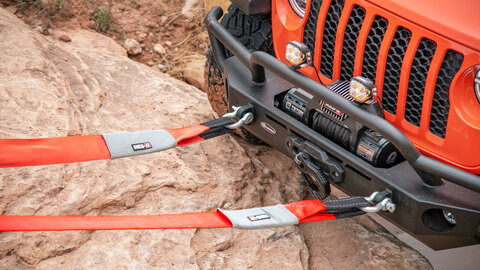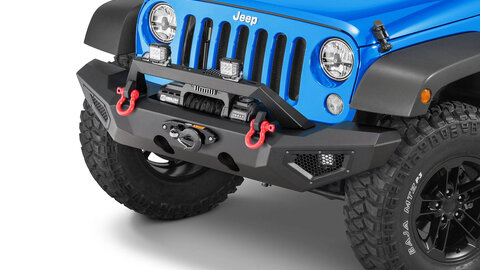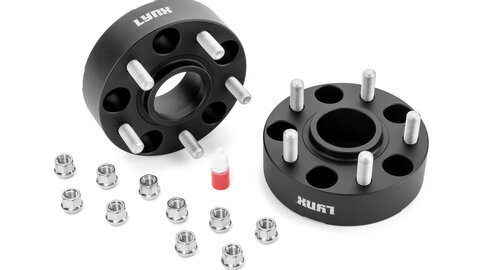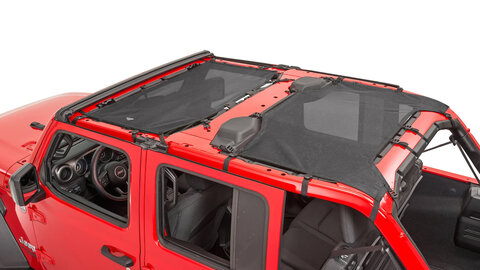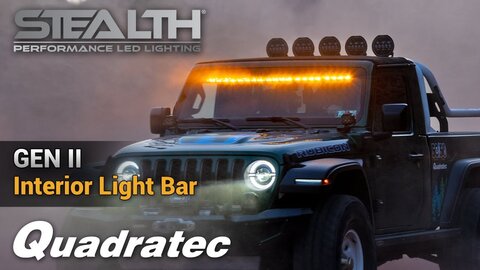by Matt Konkle
Managing Editor
For decades, a large majority of Jeep owners never thought about taking their vehicle off-road. Sure, everyone can say how capable a Jeep is in the wilderness, but whether it was just simply not having interest, a lack of understanding, fear, or just wanting to own a Jeep to ‘own’ the image, only a fraction actually ventured off the pavement.
However, all that seemed to change over the past few years as more and more people sought to break out from COVID-related isolation and explore the countryside. For the first time ever, really, new Jeep owners in massive numbers branched out and began using their vehicles to go camping, off-roading and overlanding with family and friends.
Maybe this is something you've thought about as well now that the calendar has turned to warmer months. And if so, you may also wonder how to keep your Jeep from turning into a dented, broken thing — especially if it is your daily driver.
So, here is a list of the top things most Jeep owners think about before taking that first camping, off-road, or overlanding trip, and how you can overcome those worries to have an amazing time. A time that will lead you back again and again to enjoy the great outdoors.
Vehicle Damage
Taking your new Jeep into the woods on a camping trip or running some trails with friends, the vast majority of time, will end with simply memories of a great day. However, like spending time in the gym, the more you press and try to do difficult things, the more something could happen.
When driving many trails to and from a camping spot or while overlanding, you may get a few tree branch strikes or scrapes against the vehicle's body. And the more rocky a trail, the more you may see a few nicks against your bumper. That’s why upgrading to strong front and rear bumpers (steel instead of plastic) is so helpful to combat those strikes. Additionally, side protection is a great addition to prevent your doors and side panels from potential damage should the trail become a little more aggressive.
Rest assured though, your vehicle does have undercarriage protection and a few rock scraps, or the front or rear differential nicking something, will hurt you more than the vehicle.
Making a Mistake and Rolling Over

This is where those random YouTube off-road videos can be a detriment, instead of a help, as they often make it look like every wheeling adventure ends with someone flipping over or on the side. However, the actual truth is someone rolling over while off-road is an extremely rare occurrence. When you see that kind of video, or photo, normally it is someone attacking an obstacle without the right type of equipment, skill level, or simply not listening to the spotter. Or maybe it is just someone looking to get views.
Now, can a rollover happen to anyone? Sure. But as a new Jeep owner, the chances of you driving recklessly enough for that to happen is minimal. Always remember to take your time across any rough terrain and never feel like you are holding anyone up. Go at the speed you are most comfortable with, and if you feel any discomfort, ask for someone to help guide you through. Spotters can be essential at times and will happily guide you through all kinds of tough terrain so you, and your vehicle, remain upright.
Getting Stuck

Get one thing straight as a new Jeep owner who wants to go off-road: you’ll never be in a group who just leaves you hanging — or worse, forces you to leave your vehicle in the woods when you get stuck.
It just won't happen. The Jeep community helps its own.
Whether it is heading out to go camping with friends, or trail riding with new acquaintances, it is always all for one. If something happens to any Jeep in the group, everyone pitches in to help.
Now, in most cases, if you get stuck it will either be from mud, deeper water than you thought, or rocky hang ups. Often, a few tugs from a tow rope will clear the problem. Or, help from someone who has a winch on his or her vehicle and can pull you from trouble.
Bottom line, sure, you may get stuck at some point during your off-road adventures, but your buddies or trail group friends will always help you out of a jam. Of course, this ties back to one of the oldest wheeling laws in the world — always go out with at least one other vehicle.
Mechanical Breakdown

Once again, file this under probably won’t happen when you go off-road in a new Jeep. Those videos you see with broken axles or driveshafts, well, they do occur, but usually when someone tries to conquer an obstacle a bit too rough for their set up.
During most wheeling trips, or camping and overlanding adventures, what you face will not tax the vehicle to the point of breakage, and the more common issues like an overheating radiator or tire and brake problems can usually be resolved with proper training and tools. Remember, too, that you’re likely to be with other drivers who can always help and get you back to the trailhead if needed. Bottom line; a breakdown does not have to end your fun and there will always be someone who can help.
Not Knowing Where to Go and/or Not Knowing Other Drivers

One of the best things about being a new Jeep owner is that you just joined a whole new family. One that seems like it is always doing something no matter where you live.
So, if you are looking to jump into the off-road world — maybe to ride trails, or to just camp and overland — there should always be an area Jeep club you can join to learn when people trail ride. And they will be happy to have a new member to take along. Just about every club out there has some type of schedule, or meet and greets, that you can attend to see if you are a good fit.
Additionally, phone apps like Maprika or websites such as the Federal Bureau of Land Management, can show open trails around your area. Plus, all national forests are required to publish a “Motor Vehicle Use Map.” These maps are little more than line drawings of the trails with trail numbers, but they can show the major paved roads surrounding those trails in order to help orient you when you are headed out.
Ideally, when you are unsure where to go, research is your best friend. For those in areas where there is little public land (east of the Mississippi) then off-road parks are your best alternative, and those should have a well-mapped trail system. In the west, there are a ton of BLM areas that make for great off-road or overlanding destinations.
Tire Issues

First off, as a new Jeep owner who plans to take your vehicle off-road, you need to know that you really can’t hit that trail with a stock tire pressure. So, airing down those tires is an important first step.
However, no matter how careful you are with those tires, it is possible (although unlikely) you may puncture a sidewall or break a bead. This can happen when you turn too sharp, too fast in soft stuff or against a rock, or try to push a tire up on a rocky ledge where the sidewall is exposed to other sharp rocks. Because of that, it is always a good idea to carry a heavier-duty off-road jack when leaving the road. Or, at least make sure someone else has one.
As far as taking the vehicle off-road with factory tires, it really depends on the tires you received with your Wrangler. Most trim levels include ones that are considered ‘street tires’ that do not have a lot of additional traction elements like aftermarket tires. It is highly recommended that you change over to a set of all-terrain or mud-terrain tires on the vehicle before doing anything more than camping or light overlanding.
Whether you change tires, or stick with the factory versions, it is also highly recommended you carry along a tire repair kit as these can be invaluable when it comes to patching that rubber versus having to entirely change the tire.
Embarrassing Yourself
No one is perfect. And no one hit the trail, or went overlanding, for the first time with the ability to instantly overcome anything in the way. Understand that everyone has to start somewhere and the hope is that your fellow drivers are patient and understanding — which they normally are because they know the learning process as well.
To build your confidence, you should really look around your area for someone offering introductory off-road classes like a 101 or 201 course. Everyone in those classes is in the same position, and the instructor no doubt wants to pass along knowledge that not only is helpful, but will ensure any camping, trail, or overlanding time is well spent.
When you are out on the train, don’t worry about holding up anyone in your group with questions or with uncertainty with your line on an obstacle. Every trail group we’ve seen makes it a training experience every time these questions come up, so the entire group can learn while you overcome. It is really a win-win. And you’ll be a smarter four-wheel driver as a result.
Not Having as Much Skill as Others in the Group
While perhaps a spin off of the previous segment, fear of your novice skill level is definitely something that new Jeep owners usually have when headed off-road.
And it is not unfounded.
After all, as a new Jeep owner, chances are you may have no experience at all when it comes of off-pavement driving, But again, everyone has to start somewhere. So, again, we recommend definitely taking some off-road driving classes that teach you — while driving the vehicle — how to overcome certain problems.
Sit down classroom courses are nice, but nothing can replace actual ‘real world’ trail classroom learning. And you do not need to jump into some really difficult trails either. You can learn what you need to know, such as tire placement, throttle control, off camber, departure angles, four-wheel drive use, hill ascents and descents, all from that real world driving classroom.
Going Off Camber

This is the official term for driving when tipped at an angle. And it can be a bit disconcerting. As a new Jeep owner, being tilted can be an unnerving experience and even veteran drivers are sometimes uncomfortable driving off camber.
As someone new to the Jeep world, driving your vehicle on an angle will not be a problem until you get up around a 30-degree pitch. Understand, you’re not likely to tip over, though, unless you’re traveling fast. So, go slow and control your pace.
There isn’t really anything to help overcome issues with off-camber driving except experience, so they more you are in that position, the more you'll learn that the vehicle is built to handle those 'more extreme' angles without flopping over. Just continue to drive slow and safe until you are back to flatter terrain.
Not Having Nearby Emergency Services
Off-road, camping, or overlanding destinations, by their nature, are normally in more remote locations and can be outside the two-hour window that normally defines an urgent care response. Additionally, you may find yourself in areas that have no cell service.
As a new Jeep owner looking to take your vehicle off-road, you should really get basic first aid training just in case. Learn how to stabilize an injured person. Take a basic survival course, too. This is not to say that you need to be a serious physician, but just to have the knowledge to help prevent something from being a more serious issue.
Additionally, pack alternate forms of communication. Your smartphone may not have service on the trail, so things like a GMRS or CB Radio setup can be invaluable.
Again, keep in mind that you should never head out off-road by yourself — especially if you are new to the off-road scene.
Finally, remember the most important thing about camping, overlanding, or off-roading, is to have fun. Trust in those around you to help. And trust in yourself.












